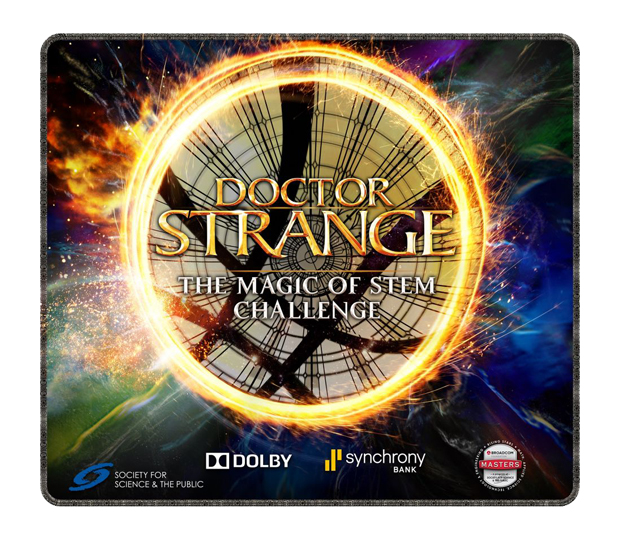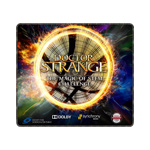Disney, Marvel Studios, Dolby, Synchrony Bank, Broadcom MASTERS and Society for Science and the Public have announced the Grand Prize winner and finalists in the nationwide Marvel Studios’ Doctor Strange: The Magic of STEM Challenge, in conjunction with the Nov. 4 theatrical release of Doctor Strange — starring Benedict Cumberbatch, Chiwetel Ejiofor, Rachel McAdams, with Mads Mikkelsen and Tilda Swinton.
The Grand Prize was awarded to Ashley Qin of Arcadia, California. The 16-year old has won mentorship from The Walt Disney Studios Digital Team to learn how to producer her own science vlog episode, from story development through production and presentation. The completed episode will be shown through a Disney media platform.
Qin and her four fellow finalists — Navya Annapareddy, Maggie Chen, Imani Porter and Amanda Zong — all attended the World Premiere of Doctor Strange, receiving two round-trip tickets to Southern California (plus meals, transportation to organized activities and hotel accommodations), $1,000 deposited into a high-yield savings account from Synchrony Bank, a tour of Walt Disney Studios in Burbank, and more.
Marvel Studios’ Doctor Strange: The Magic of STEM Challenge invited girls to create a science vlog episode in which they answered their favorite — or most vexing — scientific or technological question. You can view the winning and finalist entries at www.DrStrangeMagicofSTEM.com.
Grand Prize Winner:
Ashley Qin, Age 16, from Arcadia, Calif.
How do non-invasive glucose monitoring wearable biosensors work?
Ashley used fast-draw animation to creatively teach her viewers about wearable biosensors and how they can function as non-invasive glucose monitors. She explained how this technology will allow diabetic patients, especially young patients, to easily and inconspicuously monitor their glucose levels, thereby maintaining a healthy lifestyle without embarrassment or the need for cumbersome monitoring equipment.
Finalists:
Navya Annapareddy, 16, Haymarket, Va.
How do upper-limb prosthetics work?
Navya’s vlog presented an engaging and easy to understand history of prosthetic devices beginning with the first known device, a toe found on an Egyptian mummy, and continuing to fully articulated modern-day devices that can be controlled by a person’s brain activity. Navya showed how advances in prosthetic design have taken the idea of regaining the use of a limb from the magical to the practical.
Maggie Chen, Age 16, San Diego, Calif.
How can antibiotic treatments be made more effective and safe?
Maggie, through the use of engaging imagery and demonstration, explained how nanotechnology can be used to enhance the effectiveness and safety of antibiotics. Maggie enthusiastically shared her interest and fascination for the exciting possibilities of nanotechnology biomimic applications in healthcare.
Imani Porter, Age 15, Bolingbrook, Ill.
Why are some people more susceptible to hair loss than others?
Imani’s vlog answered her question by introducing her audience to the fascinating field of metagenomics through the use of clever animation and personal presentation. Imani used a novel self-awareness approach in her vlog, which not only enabled the viewer to easily understand her topic, but also assured young girls that it is okay to feel conflicted about their abilities in STEM and encouraged them to keep following their interests.
Amanda Zong, Age 17, Bronx, N.Y.
How does computer vision software work?
Through a combination of fast-drawing animation, video annotation and demonstration, Amanda explained how facial recognition software, a form of computer vision technology, distinguishes a face from other similarly shaped objects, and can further distinguish specific facial features from one another. Amanda also explained how advances in computer vision software allows self-driving cars to identify road signs and assists physicians in the diagnosis of diseases.















